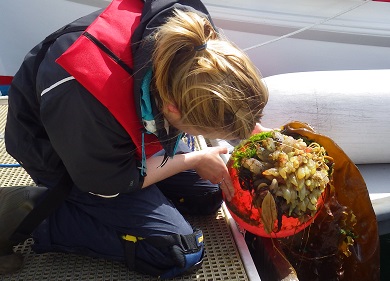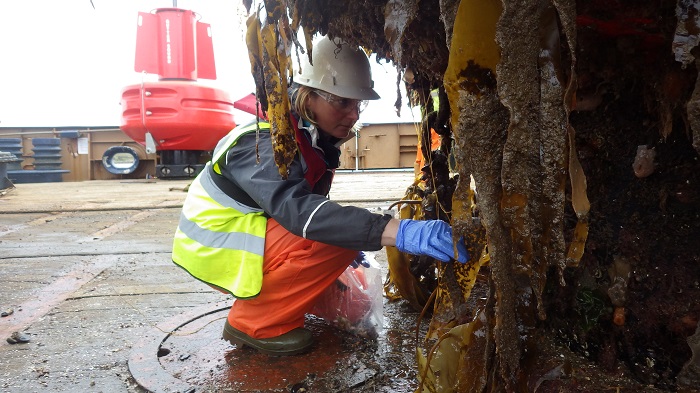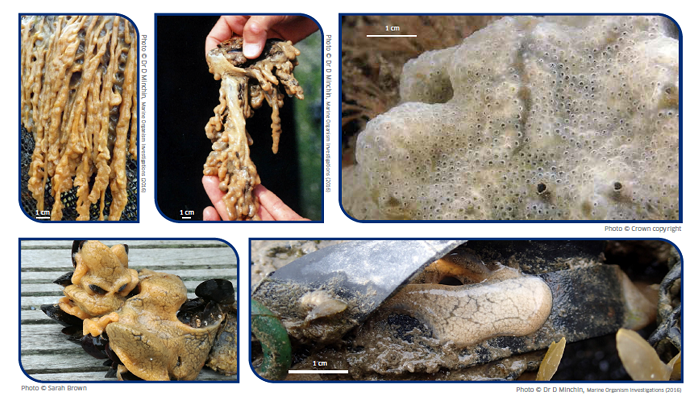Marine
What are Invasive Species?
May 20, 2022 by Marine Directorate Communications No Comments | Category Aquaculture, Collaborations, European Maritime and Fisheries Fund (EMFF), Fisheries, Freshwater Fisheries, Marine Directorate general, Marine Directorate Science, Marine Environment, Marine News from other Organisations, Scottish Coastal Observatory
Invasive non-native species (INNS) are plants and animals that have been introduced by humans, either deliberately or accidentally, from an area outside of their native range.
Once introduced, they can out-compete local species, creating an imbalance in the ecosystem and threatening native biodiversity. The Global Assessment Report by the Intergovernmental Science-Policy Platform on Biodiversity and Ecosystem Services (IPBES) identifies invasive non-native species as one of the main direct drivers of biodiversity loss worldwide. The economic cost of INNS to the UK economy is calculated to be £1.7 billion annually[1].
Many cases of non-native species do not cause significant problems in their new environment. However, they have the potential to live and breed without the same dangers of predators, pests or diseases that have evolved to limit the native population. This means that they may be able to survive better than the local species, using food resources and habitats and impacting populations of local species, while multiplying rapidly themselves, thereby becoming invasive. This can have a major impact on an area’s ecosystem and biodiversity.
Major impact on ecosystem and biodiversity
In the marine environment, INNS can spread through a variety of pathways; in ballast water, through hull fouling (marine growth) on vessels, by aquaculture stock movements and by accidental or intentional releases. Some INNS we are particularly vigilant for in Scotland include: carpet sea squirt, American lobster, Asian shore crab, slipper limpet, signal crayfish and pink salmon (links to more information about each can be found below).
Scottish Government action
In Scotland we have been dealing with outbreaks of Didemnum vexillum or carpet sea squirt as it is also known, which is present in Scottish waters specifically in the Firth of Clyde and Loch Creran on the west coast of Scotland.
Loch Creran is a designated Special Area of Conservation (SAC) due to the presence of reefs produced by living organisms. A SAC is a special habitat and/or species as listed in the Habitats Directive, a legal framework on the conservation of natural habitats and of wild fauna and flora. Because of this protection, the Scottish Government actively engages with local marine users to help control the spread of carpet sea squirt and ensure the environmental integrity of the reef.
The Loch Creran Community Biosecurity Action Plan was produced by Marine Scotland in partnership with the community to help advise marine users on the best ways to manage and prevent further spread of carpet sea squirt. A similar Community Biosecurity Action Plan was commissioned for Loch Fyne, located close to the Firth of Clyde, where carpet sea squirt is also known to be present. Whilst both plans are focussed on the carpet sea squirt, the actions listed are useful and practical against many other types of marine invasive species.
Survey and Monitoring Work
Scottish Government scientists carry out annual surveys at hotspot locations for carpet sea squirt and other INNS, to assess where further action may be required. There is also a lot of work underway with the British-Irish Council about introducing a voluntary protocol for the aquaculture industry to help manage biosecurity risks involved with stock movements and prevent INNS, which could be very costly to this sector.
We are also actively monitoring for American lobster, signal crayfish and pink salmon, working with UK administrations and statutory organisations such as: NatureScot and Scottish Environmental Protection Agency (SEPA) to ensure high levels of biosecurity to prevent further outbreaks, or control spread where required.
Shetland and Orkney Islands
In Shetland, the University of the Highlands and Islands has been monitoring the presence of marine INNS for the last decade. The Shetland Islands Regional Marine Plan (SIRMP) has been developed with financial support from Marine Scotland and the Shetland Islands Council to identify areas most at risk of non-native species. This was used in the development of a biosecurity plan for the Shetland Islands and to guide where monitoring occurs.
Orkney Harbour Authority conducts annual surveys of natural and artificial marine habitats using a variety of methods to collect samples and measurements at each site. This data helps to monitor the local environmental conditions because any changes over time could affect how likely new marine INNS are to spread to the region. To date, 21 marine INNS have been recorded by this monitoring programme including: Japanese skeleton shrimp, red seaweed, Bonnemaison’s hook weed and orange ripple bryozoan.
Five steps to help prevent the spread
- if you find a suspected INNS, these can be recorded on the UK-wide database iRecord. A photograph, location and detailed description would be especially helpful for any reports submitted. The Non-Native Species Secretariat website has a wealth of resources, including over 60 identification sheets for various species and additional apps that can be used to record specific INNS
- whenever you leave the water remember the guidance to ‘Check, Clean, Dry’ as some invasive plants and animals can survive for over two weeks in damp conditions
- don’t let any garden, pond or aquarium plants enter the wild – check the guidance for how to ‘Be Plant Wise’
- take care of your pets and never release them or let them escape into the wild; it could have a major impact on other wildlife
- be aware of species alerts for the UK and if you see them, report them
- there are lots of volunteering opportunities throughout the year – if you are interested, check for local action groups in your area and get involved
Further information:
- video highlighting the invasive species to look out for in Scotland
- Marine Scotland blog post – The smothering impact of didemnum vexillum (carpet sea squirt)
- Marine Scotland blog post – Retain and report American lobster
- identification sheet for – Asian shore crab and brush clawed crab
- identification sheet for – slipper limpetinvasive species to look out for in Scotland
- Fisheries Management Scotland guidance for pink salmon in Scotland
- identification sheet for – signal crayfish
[1] The economic cost of invasive non-native species on Great Britain. (cabi.org)
Tags: biodiversity loss, Carpet Sea-Squirt, Didemnum vexillum, Fisheries Management Scotland, invasive non-native species, invasive plants, Invasive Species Week, Loch Creran, Loch Fyne, marine environment, marine invasive species, NatureScot, Non-Native Species, Special Area of Conservation





Leave a comment